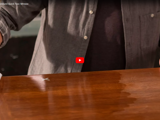Video is an incredibly powerful tool for a business. In a time when businesses can showcase their products and services on giant walls of monitors and palm-sized cell phone screens, a good video is a valuable investment that allows you to tell your story and draw in your audience. Now there’s just one big question – how much does that video cost?
The answer to that question is complicated. No two videos are alike, so it’s impossible to pinpoint an exact price without knowing more about your project. For example, a simple video can cost as little as a few thousand dollars, while a large, complicated production can cost hundreds of thousands of dollars depending on your needs.
Fortunately, this ambiguity doesn’t mean that you can’t understand the basics behind what adds to your video project estimate. There are a variety of identifiable factors that can help you understand why one project may cost more than another – and why those factors are well worth the price depending on your needs. Let’s break down exactly what affects the overall cost of your video project.
What Impacts the Cost of a Video?
The Video Crew
Every video project requires some type of crew to help you create your vision. Of course, the type of crew members and overall number of people needed for your project can vary greatly depending on the size and scope of what you need to shoot.
Some projects can get away with having just a director of photography (also called a DP) and a grip. Others may need a good dozen or more hands on deck to assist during a large, complicated shoot. As you may expect, every individual adds to your budget, but they may be necessary depending on what’s required to create your video project. There are also times where some people may serve in multiple roles. Here’s a breakdown of the different roles you may need on a video set (and why they’re worth the money).
Director
When you need to use your video to tell a story, it’s good have a director on set. This person oversees the whole production and makes sure it matches your vision, whether it’s directing talent, shooting at a certain angle to achieve a specific look, or dictating the way a scene should be lit. A director isn’t always necessary on smaller shoots, but they’re worth their weight in gold if you need a creative mindset on set for your project.
Director of photography (DP)
Just about every project will have a DP to help frame every scene. While a director guides the overall direction for lighting, the DP provides a technical point of view as to how to frame the scene. For example, the DP will need to take the time of day into account if the director wants a soft, morning light for a shoot. This can involve adjusting shooting times based on available lighting to capture the sun in the right spot for both indoor and outdoor shoots. Depending on the DP, this person can also serve as the director for smaller or simpler productions.
Sound recordist
If you’re recording sound at the shoot, you’re going to need a sound recordist. This person will make sure your sound is crisp and clear, so it’s ideal to have someone completely dedicated to sound instead of jumping back and forth between other jobs.
Camera operators
You can’t film something without a camera operator. Typically, a project will require one or two operators based on the overall scope of the project. For example, one person will stay on the main camera while another may shoot b-roll for supplemental footage. These additional camera operators can add shot variety and provide more footage for editors to cut to for the final product.
AC (camera assistant)
While the operators shoot your project, the ACs make sure the cameras are ready to go at any moment. This job includes making sure the camera batteries are always good, that everything is in sync from scene to scene, pulling focus to adjust the focal point of the scene, and other key tasks. Depending on the size of the shoot, there can be multiple ACs ensuring that the cameras are always prepared.
Gaffers and grips
Gaffers and grips both deal with lighting and electrical equipment, although they have varying degrees of experience and ability. Gaffers have the ability to place lighting equipment to achieve a certain look, while grips will handle the lighting, flags, stands, and other items to execute what the gaffer wants. While the film industry splits these roles up into two different groups, video productions can have the same person play both roles depending on the size of your production.
Art director
An art director is in charge of ensuring that the shoot follows the client’s vision for the project in accordance with the storyboards. The art director’s presence is typically required for bigger, more creative projects. However, the client can also serve as the art director to oversee that they’re getting the type of video they want for their investment.
Set stylist
The set stylist takes care of details involved with moving parts on a set. For example, any shoots that require various props or wardrobing for the talent, the set stylist will oversee those aspects of the shoot. Set stylists are also in charge of the environment of your shoot, which means they will plan oversee the look of your location or set to ensure it matches the look you want for your video.
Makeup stylist
If you need people to look pretty (or not so pretty) for a shoot, a makeup stylist can help. If there’s enough talent involved on a job or a particular need for quality makeup, this stylist will help ensure that the people in your video looks just like they should. They also ensure that your talent looks the same throughout the shoot. As the day goes on, these stylists will touch up makeup so that everything is consistent from the first shot through the last.
Producer
You don’t need to be in Hollywood to benefit from a producer. Bigger projects or ones with a lot of moving pieces and parts can greatly benefit from a producer who help manage all the different aspects of a video shoot. This role will keep everyone on schedule and make notes of the best shots to streamline both the shoot and the editing process after all the footage is captured.
Production assistant
Most shoots can benefit from an assistant who can help facilitate different aspects of the shoot. From helping the producer to arranging for craft services, a production assistant (or two) can help make sure that all the important details aren’t missed on bigger projects.
The Talent
One of the more notable costs associated with a video project is the talent fee. Whether you need a person or an animal, you’ll need to find the right subject based on your budget.
Adult talent
When it comes to working with human talent, there are a few routes you can go.
-
You can use people you know
-
You can utilize amateur talent through the video studio
-
You can hire professional talent
People you know
Your most inexpensive option is to provide your own talent, whether it’s an employee at your company, a friend, or anyone else you know who is available. The advantage of going this route is that you can source talent for your video without any charges or for minimal cost. That’s a big potential savings that can dramatically reduce the cost of your project.
The downside is that your talent is cheap for a reason. Amateur actors can lead to lesser performances or can make a shoot take longer because of their inexperience and potential discomfort in front of the camera. If you need more than one person on camera, the risk for these issues become even greater. Ultimately, if your project only needs a few warm bodies, this can be an attractive option. If your video depends on the performance of your talent, you may want to look past people you know.
People from the video studio
If you aren’t quite ready to invest in true talent, your video studio may be able to provide some help for a lower fee. For example, TRG can source an actor from its own team or someone we know who’s more comfortable with video work. This option can help you find some talent that won’t be quite as raw as a true amateur, but it will only lead to a one-time fee that won’t amount to anything near the cost of agency talent.
Professional talent
Using professional talent is the costliest option of the three, but it also means you’ll get the most out of your talent. If your video depends on a person’s performance, someone with the right experience and ability will be well worth the investment. There are also different levels of professional talent that can impact cost. Non-union talent will be less expensive, but they may not be able to act and respond as quickly as a higher-cost actor.
The costs associated with professional talent is also more complicated than simply choosing a more or less experienced person. Unlike amateur talent that will either be free or a one-time fee, a professional talent fee is based on usage. There are a variety of factors that can impact this cost, including:
-
How long you plan to use the video
-
Where you plan to use the video
-
The number of views for the video
-
If you need full body or hand talent
-
If you need speaking or non-speaking roles
In terms of where you plan to use the video, every type of usage has a different rate. For example, talent for broadcast videos can cost more than those meant for regional TV, online only, or internal use. In addition, you’ll need to sign the talent to a contract based on how long you want to use the video. These contracts typically last for one, two, three, five, or an unlimited number of years. Longer contracts are more expensive, but you’ll have to pay the talent to extend the contract if you ever decide you want to use that video past your initial terms. While unlimited is the most expensive option, it can sometimes be cheaper just to pay for that option instead of renewing the contract.
In addition to the aforementioned factors, there are some other aspects that can affect your rates. Different talent agencies can consider if they have any competitors, if their talent has worked on other shoots in line with your product, and other variables. If you need a very specific type of talent, you may also need to pay extra to have them travel from out of town if nobody is locally available. As a result, we’ll give our clients several different options to help them compare potential costs to see which avenue is best for their project and their budget.
Child talent
While the costs associated with adult talent may be complicated, hiring child talent has its own challenges. As with adults, you can find both amateur and professional child actors. Children must have a parent or guardian on set and there are rules as to how long these children can work, but the bigger challenge is making sure you get what you need out of that child.
One of the trickiest parts of using young talent is that they’re just kids. Ultimately, you’re only going to get so much out of a 6-year-old. Using a child actor means you need to schedule around their needs, give them breaks to calm down, have toys and snacks available, and plan for other such details. All those factors will impact the budget.
In addition, you can’t always guarantee you’ll get what you need out of a child actor, especially if they don’t have prior experience on a video shoot. If you want to save costs by using the child of a family friend or employee, you run the risk that an unexperienced kid just won’t want to be there. A shoot can be derailed if a kid just doesn’t want to cooperate because he or she isn’t familiar with the setup. This means you’ll need to work with your video partner to determine if it’s better to invest in more expensive child talent or risk running over schedule.
Animal talent
Good talent doesn’t have to be human. Just like people, dogs, cats, and other critters can also add to your budget depending on your choice of talent. There are agencies available that will charge based on usage, but these animals will be better trained to follow instruction from handlers. As a result, you’ll likely get the shots you need much more easily with professional animal talent than with your neighbor’s shih tzu. Providing your own animals can help cut down on the fee, but just know that the process can be very time consuming when working with an untrained creature – if you can even get the exact shot you wanted at all.
Your Location/Set
There are plenty of people involved in a video shoot, both on and off camera, but you still need a place to shoot your video. Certain places can add various costs to the overall price of your project depending on what type of location you had in mind.
Existing locations
Sometimes the best place to shoot is an established location. Whether it’s a local restaurant for a bustling kitchen scene or somebody’s home, an existing place can provide an established space to shoot your video without modifying or building a set. However, there are other costs that will affect your budget.
To start, you need to find a location. Unless you have a specific place in mind, it will take time to find the right spot for your video. The time and effort it takes to scout will affect your budget. Once you find a good location, the owner of that location needs to say yes. You’ll also likely need to pay them a location fee for the ability to use that space.
After everything is settled and you find a space that works for filming and matches your vision, you’ll also need to work around that locations schedule. Some spaces may be free during regular work hours, but businesses and other locations may not be free except for off hours or specific days. This can lead to potential shooting delays or may even add another day or two to your shooting schedule, all of which may affect your final budget.
Sets
Whether you can’t find a location that fits your needs or you just want more control over the exact look of the space you film, sets can give you freedom to create the perfect space for your video. Of course, this also means that the costs associated with either modifying an existing room set or building a completely custom set from scratch will impact your overall budget. However, investing in sets can help you take control over exactly where and when you shoot your video, which can give you more peace of mind and eliminate unforeseen variables that affect other locations. Depending on your situation, you may also be able to lower sets costs with a co-op project. No matter your preference between location or sets, your video partner can help you determine ways to balance the needs of both your project and your budget.
The Equipment
While a multimedia studio will have plenty of cameras and other equipment on hand, it’s common for video projects to need some specialty items to achieve a specific look. A good reference of what you want your video to look like can help us determine what type of equipment it will take to pull off your vision. If it requires high-end gear, we’ll need to add some rental fees for any special cameras, shooting rigs, lighting, or other necessary tools.
For example, any video that highlights high quality extreme slow-motion shots will require a specific camera that can add thousands of dollars to the budget. Specialty shooting rigs may be necessary to recreate a specific motion over and over. Each tool has a specific purpose, so these investments can add to your budget to help you create the right look for your project.
Real-Life Video Project Examples
Now that you have a good idea of just what it takes to properly price a project, it’s time to move into less hypothetical cost adjustments and into some real-life examples. The following four projects range in both complexity and cost, which can give you an idea of just how much various videos can cost based on the needs of your project.
Video Project No. 1 – $5,000 to $7,000
The above 15-second video for American Greetings is a good example of a lower-cost video where we were able to cut down on extra costs without sacrificing on quality. American Greetings didn’t need professional talent to accomplish what they wanted, so we used an internal employee as the hand model. American Greetings also supplied all the products shown in the video, which saved us or a stylist from sourcing props for the shoot. As a result, we were able to complete the project for less than $7,000.
Video Project No. 2 – $23,000 to $27,000
The major cost for this project was that Minwax needed to dedicate more budget toward propping costs. During a one-day shoot that resulted in two videos, we needed to have multiple versions of the items stained in the video because the time it takes to truly finish these surfaces isn’t ideal for shooting. Rather than sand, dry, apply, and wait every time, we had three versions the same object prepped at different levels of the process. While it added to propping costs, it meant there was no down time during the shoot, leaving the project at roughly $25,000.
Video Project No. 3 – $40,000 to $45,000
The Wood County Hospital project ended up closer to $42,000 for two main reasons: location and supplies. The client was keen on using a classroom for the main talent. Since the budget didn’t have quite the room to build a set, we decided that using an existing location was more cost effective for the one-and-a-half-day shoot. In addition, the client originally planned to handle prop and wardrobe expenses at the beginning of the shoot. However, we ultimately needed to pick up some of those costs, which in turn added to the price of the project.
Video Project No. 4 – $100,000 to $110,000
The Delta Private Jets project required us to go on location because the client was based in a separate airport and supplied the location. Instead of shooting at a local hangar, it made the most sense to shoot at their location. Since the client had done previous shoots in their hangar, the ground team was more familiar with what needs to happen for a shoot, such as expediting special clearance for production crew, cleaning the planes, shutting off the sprinkler systems so flashing lights wouldn’t trigger the sensors, and more. However, it also added costs for travel, truck rentals, hotels, per diems, and other expenses for the video crew.
Find the Right Multimedia Studio for Your Project
Whether you need a simple 15-second video or a sizable video project with multiple assets, it’s important to work with a company that can help you capture your vision and make the process as efficient as possible. At TRG, we can work with you to identify a creative solution that helps you tell your story within your budget.
Ready to talk about your next video project? Contact TRG today to talk to our experts about how we can help you create a connection with your audience through professional video services.







